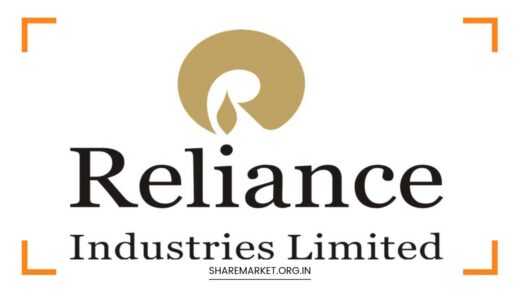Adani Wilmar: Q1 Volumes Jump 13%

Adani Wilmar
Adani Wilmar Q1 Update: A Deep Dive into Strategic Growth and Market Resilience
Adani Wilmar, the FMCG and edible oil giant, released its Q1 business update for the current financial year, showcasing impressive volume growth across segments.
This report comes amidst a dynamic market environment, making Adani Wilmar’s performance even more noteworthy. Let’s delve deeper into the details and explore the strategic initiatives driving this growth.
Market-Specific Strategies Fuel Volume Surge
Adani Wilmar’s Q1 report highlights a 13% year-on-year increase in volume across its product portfolio.
This achievement can be attributed to the company’s data-driven approach. By meticulously analyzing market trends and consumer preferences in each region, Adani Wilmar has implemented targeted strategies for different product categories.
This focus on market specificity has proven highly effective, allowing the company to capture market share, especially in under-served regions.
Beyond Bricks and Mortar: The Rise of Alternative Channels:
The traditional brick-and-mortar retail model continues to be a crucial distribution channel for Adani Wilmar. However, the company acknowledges the growing importance of alternative channels.
Their Q1 report reveals a robust 19% growth in these channels, encompassing e-commerce platforms, quick commerce providers offering rapid deliveries within minutes, and modern trade (MT) stores.
This surge signifies a clear shift in consumer behavior towards online grocery shopping and convenience-driven formats.
By prioritizing its presence in these rapidly growing channels, Adani Wilmar demonstrates its ability to adapt to evolving market dynamics.
Expanding Global Footprint: Branded Exports Witness Significant Jump:
Adani Wilmar’s focus isn’t limited to the domestic market. The company reported a remarkable 36% year-on-year growth in its branded exports for Q1.
This significant jump reflects the company’s strategic efforts to expand its global footprint and cater to international markets.
Factors like brand recognition, quality control, and a robust supply chain are likely contributing to this impressive export growth.
As Adani Wilmar strengthens its international presence, it unlocks new revenue streams and diversifies its customer base, mitigating dependence on any single market.
Government Sales and FMCG Diversification Bolster Performance:
Looking beyond the core edible oil business, Adani Wilmar’s Q1 update reveals additional growth drivers. Sales of non-basmati rice to government agencies during the June quarter provided a significant boost to the company’s overall performance.
This collaboration highlights Adani Wilmar’s ability to cater to institutional needs and potentially forge long-term partnerships with government bodies. Furthermore, the company’s Food and FMCG segment displayed remarkable strength, registering a volume growth of 23% compared to the previous year.
This significant expansion beyond its core business segment showcases Adani Wilmar’s strategic diversification into high-growth FMCG categories.
With a broader product portfolio, the company reduces its reliance on a single segment and positions itself to capitalize on the ever-evolving preferences of Indian consumers.
Navigating Headwinds: Edible Oil Business Thrives Despite Industry Challenges:
The edible oil industry, a key segment for Adani Wilmar, faced “weak demand” during the June quarter, as mentioned in the company report.
This industry-wide slowdown could be attributed to various factors, such as fluctuating global prices, changing consumer preferences, or seasonal variations. However, despite these headwinds, Adani Wilmar managed to achieve a commendable 13% volume growth in this segment.
This resilience can be attributed to the company’s robust sales and distribution network, which ensures consistent product availability across the country.
Additionally, Adani Wilmar’s increased access to retail stores likely played a crucial role in driving sales despite the weak industry demand. This success highlights the effectiveness of the company’s business model and its ability to navigate challenging market conditions.
Financial Performance and Market Outlook:
While the company refrained from disclosing specific revenue figures in the Q1 update, it did mention a 10% year-on-year growth in the sales value of the edible oil segment. This indicates a healthy growth trajectory, despite the weak industry demand.
On the stock market front, Adani Wilmar’s share price closed slightly lower on July 5th, 2024. However, it’s important to consider a longer-term perspective.
The company’s shares have witnessed a decline of approximately 9.26% year-to-date and 18.17% over the past year.
This decline could be attributed to various factors, including broader market trends or investor sentiment towards the FMCG sector. The current market capitalization of Adani Wilmar stands at Rs 43.29 thousand crore.
Looking Ahead: A Focus on Long-Term Growth
Adani Wilmar’s Q1 update paints a picture of a company strategically navigating a complex market environment. The impressive volume growth across segments, particularly in the face of weak industry trends in edible oils, reflects the company’s focus on market-specific strategies and diversification.
With its strong presence in traditional and alternative channels, Adani Wilmar is well-positioned to capitalize on the growing FMCG market in India.
Investors will be keenly watching the company’s future performance, particularly the impact of its strategic initiatives on revenue growth and profitability in the coming quarters.
Potential Challenges and Risks:
While Adani Wilmar’s Q1 performance is positive, there are potential challenges and risks to consider in the long run. Here’s a closer look at some key factors:
-
Fluctuations in Commodity Prices: The prices of raw materials like edible oils are subject to global market fluctuations. Any significant increase in these prices could squeeze Adani Wilmar’s margins and impact profitability. The company’s ability to hedge against such fluctuations and pass on cost increases strategically will be crucial.
-
Competition in the FMCG Market: The Indian FMCG market is fiercely competitive, with established players and new entrants vying for market share. Adani Wilmar will need to maintain its focus on innovation, brand building, and cost optimization to stay ahead of the curve.
-
Evolving Consumer Preferences: Consumer preferences in the FMCG sector are constantly evolving. Adani Wilmar must stay updated on these trends and adapt its product offerings accordingly. This might involve investing in research and development to create new products that cater to emerging consumer demands, such as health and wellness trends.
Investor Takeaway:
Adani Wilmar’s Q1 update presents a company with a clear growth strategy and the ability to navigate challenges.
The company’s focus on market-specific strategies, diversification into high-growth FMCG categories, and expansion into alternative channels positions it well for future success. Investors should closely monitor the company’s progress in the coming quarters, particularly its ability to:
- Mitigate the impact of commodity price fluctuations
- Maintain a competitive edge in the FMCG market
- Capitalize on evolving consumer preferences through product innovation
By successfully addressing these factors, Adani Wilmar can translate its impressive Q1 performance into sustainable long-term growth, creating value for its shareholders.
Final Remarks:
Adani Wilmar’s Q1 business update signifies a period of strategic growth and market resilience. The company’s ability to thrive despite industry headwinds and its focus on diversification position it for continued success in the dynamic
FMCG landscape. Investors looking for exposure to the growing Indian FMCG sector will find Adani Wilmar to be a compelling proposition, but careful consideration of the potential challenges will be crucial before making any investment decisions.

















